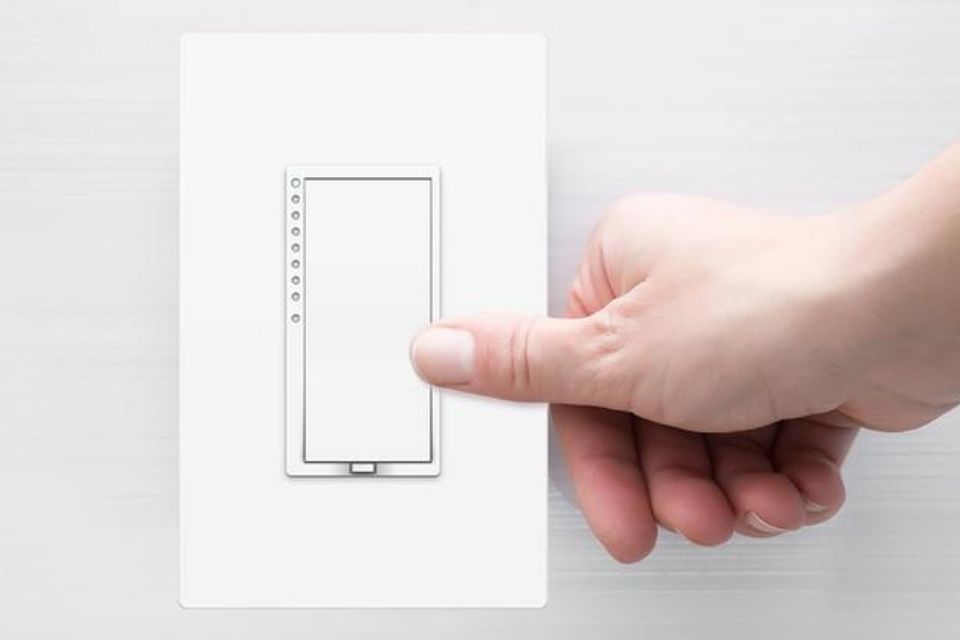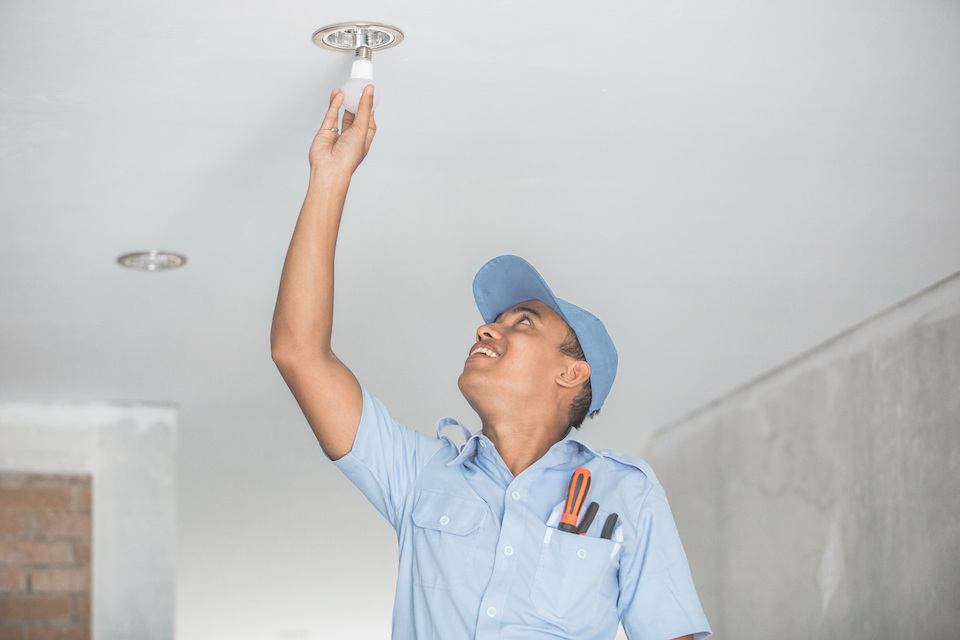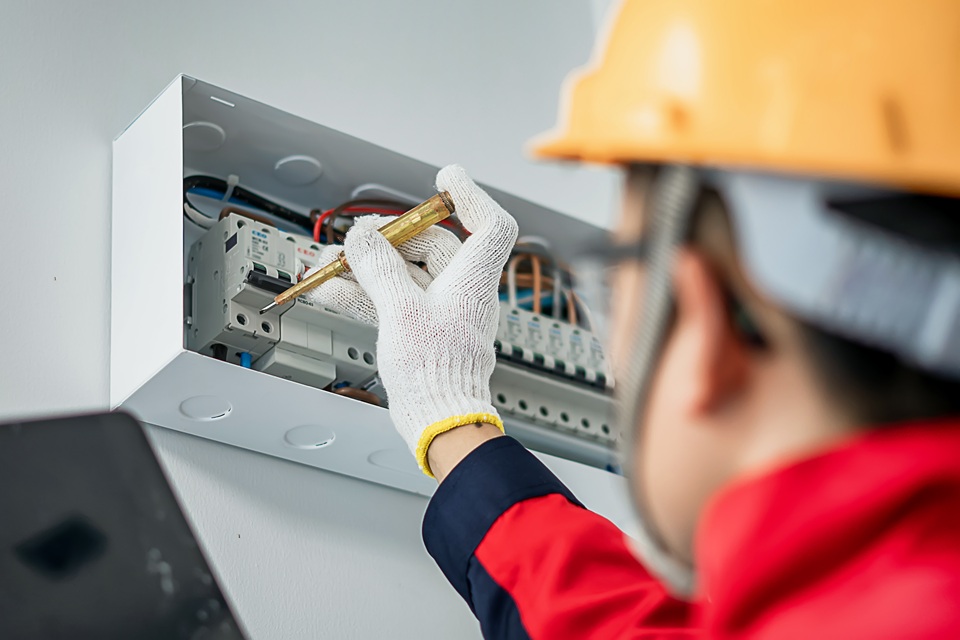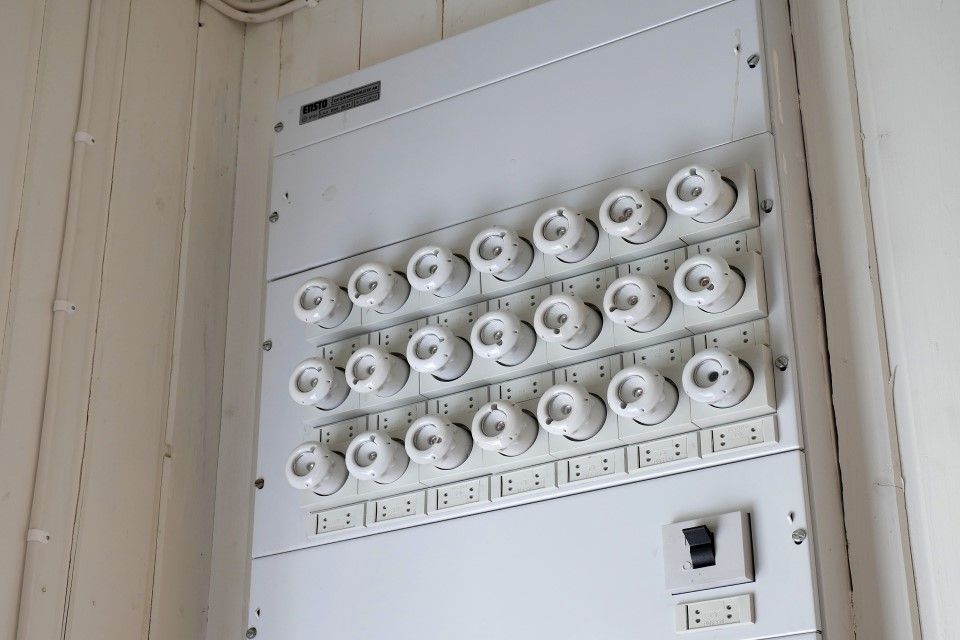How to Fix a Buzzing Dimmer Switch
Let’s start by looking at the steps involved in fixing a buzzing dimmer switch. We’ll also delve into why a dimmer switch buzzes and what might happen if the problem goes unresolved.
So, firstly, why does a dimmer switch buzz? The buzzing noise (or perhaps a humming sound) is generally the result of a fault in the light filament and sometimes with the mechanism of the switch itself.
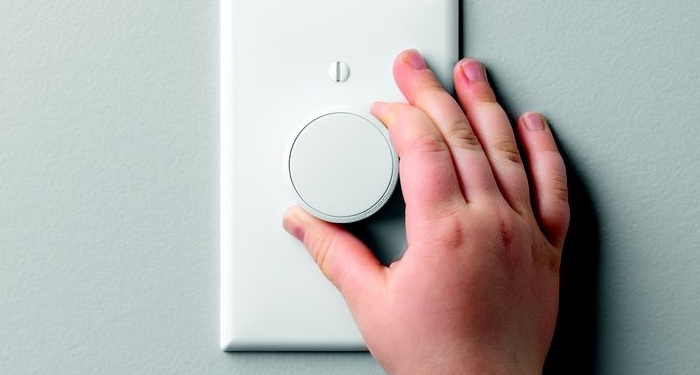
Though this is generally not a danger (unless the dimmer switch is hot, of course, in which case it may be a fire risk), though it could lead to more electrical faults in your home like a short circuit or other issues if it is left unchecked.
It also increases the danger of receiving an electric shock. Regardless of the risk level, a buzzing dimmer switch should be dealt with as soon as possible.
1. Shut Off the Power
First, you should turn off the power to the lighting circuit prior to powering off the relevant circuit breaker.
To be on the safe side, you might want to just turn off all power in the home. Making a mistake here can be lethal.
If you have any uncertainty, please hire a professional. Though, in most cases, it’s perfectly fine to undertake this sort of work by yourself.
2. Test the Power
Next, you should remove the screws from the cover plate before taking the cover plate off the wall.
Then, remove the mounting screws from the switch before cautiously pulling the switch from the box. Do not touch any of the wires.
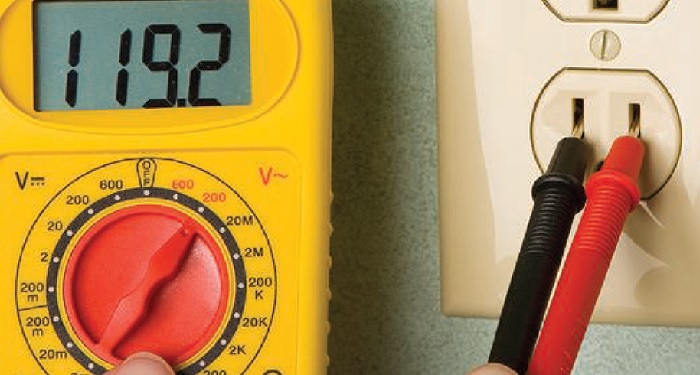
Then, use a non-contact voltage tester to check each wire is connected to the dimmer switch to ensure that there is no electric flow of power.
This extra safety step is worth doing because there was an unlikely fault with your circuit board due to the off-chance. It’s really a matter of better safe than sorry.
3. Remove the Current Dimmer
You should then unscrew the wire connector from every set of wires that are positioned on the switch.
It’s then important to separate the pairs of wire before removing the dimmer switch itself.
As with all aspects of this job, make sure to be careful when removing the dimmer switch to avoid causing damage to the wiring.
4. Install the New Dimmer
Lastly, you should fit the new dimmer. Hook the new dimmer switch by fixing it to the old wires, ensuring that colours match the wires.
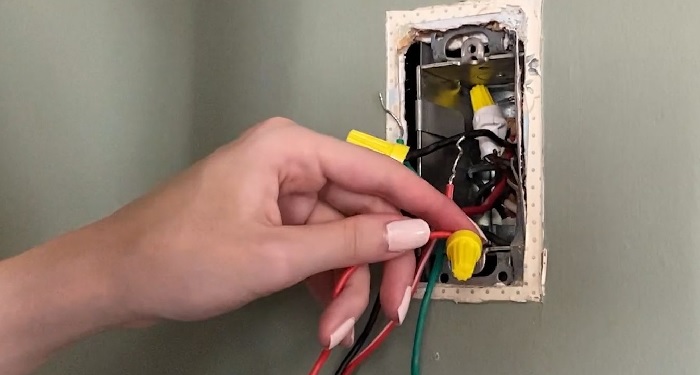
Gently pull the wires to make sure that they’re connected effectively. Loose wiring is a common reason why faulty dimmer switches arise, and there can be safety risks too.
Push the wires into the wall again, turn the power back on and turn on the dimmer switch to check it’s working.
Changing Light Bulbs
Sometimes the issue can be resolved by simply changing the light bulbs. In this section, we’ll take a look at when this may be the case and the process involved in replacing light bulbs.
You should turn off the power as stated in the ‘fixing a buzzing dimmer switch’ section.
The answer to how to change light bulbs might vary from bulb to bulb, but broadly speaking, the solution is simple and pretty much the same.
Turn the power back on, and turn the dimmer switch on and see if, with the light bulb on, the dimmer switch is still making the buzzing sound.
If it’s not the case, then you’ve likely solved the issue (assuming the problem isn’t particularly intermittent). If not, then it’s best to replace the dimmer switch.

When choosing new light bulbs, it’s worth considering what choices might be most beneficial, whether it be in relation to the wattage of the bulbs or their efficiency, for example.
More efficient light bulbs will not only save you money by cutting down your electricity bills, but they are also more eco-friendly.
Product-wise, the quality and expected longevity of light bulbs can also vary greatly.
It’s worth looking into some of the best brands on the market so that you choose the most-effective options.
This will save you the hassle and prolong the time before it’ll be necessary to fit new light bulbs again.
Dimmer Rating Upgrade
It may be the case that you have the incorrect type of dimmer switch installed. In this case, there’s a risk that in replacing the dimmer switch with the same or a similar type of switch, the problem will continue.
In this case, you may need to upgrade the dimmer rating. Let’s take a closer look at this solution.
It’s important that your dimmer switch has the correct wattage. For a single bulb circuit, you should fit a 150 watt rated dimmer.
For three 100-watt bulbs, you’d want a dimmer with a rating of at least 375 watts.
Here is a good calculation that applies:
No. of lighting fixtures x wattage per bulb x 1.25 = Wattage dimmer choice
Now, it is advisable to go one rating higher than the wattage dimmer choice answer you get. Let’s look at an example:
6 light bulbs x 60-watts x 1.25 = 450 wattage dimmer
This, you should go with a dimmer with a rating of 450 watts, or, preferably, higher. The benefits of choosing an appropriate dimmer switch based on its wattage rating include that it is less likely to result in a short-circuit, and further, the risk of a dimmer switch buzzing or heating will be reduced.
It will improve overall safety too and prevent the risk of a fire.
Dimmer Switch Replacement
Replacing a dimmer switch is generally the fix required, as laid out in a prior section.
Before assuming that the same rated dimmer switch should be fitted this time round, you should inspect the wattage that the light bulbs consume and confirm.
Use the equation from the previous section (No. of lighting fixtures x wattage per bulb x 1.25) to calculate precisely what rating/wattage the dimmer switch should have.
This way, you can be confident that you want to be putting a new dimmer switch in that you’ll possibly have to replace in a short time.
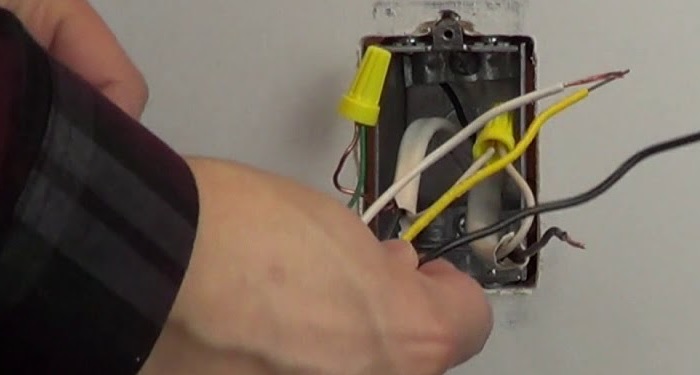
Replacing a dimmer switch, whether you conclude it should be upgraded or not, is often the necessary solution to fixing a buzzing light dimmer switch.
You can do so by DIY, but, as mentioned, it’s essential that follow the correct safety measures (e.g. turning off the power correctly).
If you have any doubts, it’s best to hire a professional. This replacement work is quite difficult and requires precise actions. There is once more safety concerns involved too.
Lower Wattage Bulbs
Instead of upgrading your dimmer switch rating, you could, of course, install lower wattage bulbs instead. This could prove beneficial in many ways.
Firstly, it can save you on energy costs as well as reduce your carbon footprint. Lower wattage bulbs have become more popular in recent times.
If replacing bulbs with other light bulbs of different wattage, it’s important that you know what you’re doing.
Never install a higher-wattage bulb into a socket with a lower-wattage.
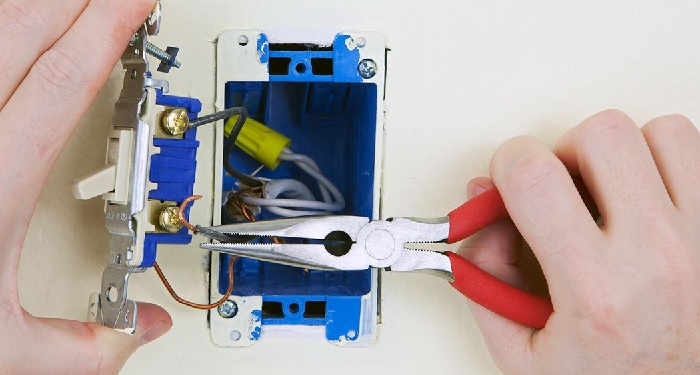
The reason for this is that it is unstable, leading to excess current being drawn from the socket that it can handle. This can be dangerous and may even cause a fire.
However, installing a lower-wattage bulb into a socket with a higher-wattage is generally perfectly safe.
In this case, you can simply follow the steps discussed in the ‘changing light bulbs’ section. If not, you should hire a professional.
That is unless it’s the case that you need to replace the socket itself with a higher wattage option. Once more, only undertake this work if you feel sure of what is involved.
Electrician Cost
You may want to hire an electrician for the job, or legally, you may need to, depending on the extent of the work involved. The average cost of hiring an electrician in the UK is £30 to £40 per hour in labour costs.
To pay an electrician to replace a dimmer switch would cost about £30 to £70 with a standard light replacement featuring a price tag of £30 to £60 in most cases.
Of course, the more light bulbs you have replaced, the more the job will cost. Possible added costs you may incur, including that of having a socket replaced.
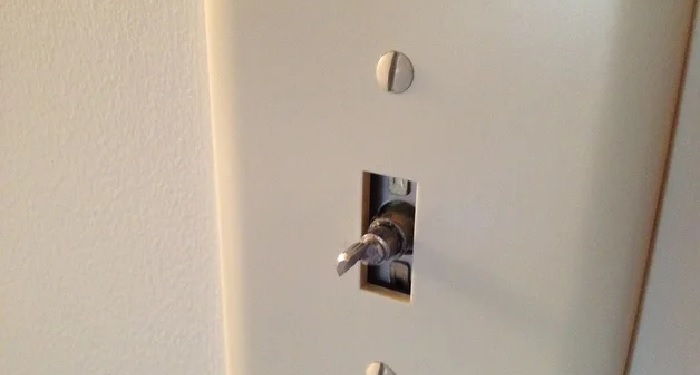
Labour costs for electricians can vary greatly, with the highest costs generally found in London and the southeast and some of the lowest prices present in the north of England, Scotland, and Northern Ireland.
For some more specific examples, prices stand about £26 to £30 per hour to hire in Doncaster, Newport, or St. Helens. Labour costs land around £30 to £38 per hour in Leeds, Falkirk, and Norwich.
Among the highest costs are those found in London, with electricians charging about £45 to £50 per hour in the capital. Similar labour prices can be found in regions like Elmbridge.
FAQs
Q: Is a buzzing dimming switch dangerous?
A: Though it may or may not be dangerous, this issue is risky and could pose a serious hazard. For instance, if left unchecked, this problem could lead to a problem and may even cause a fire.
For that reason, the issue should be dealt with as soon as possible. Replacing the light bulb may be the answer.
However, a lower wattage bulb or a more highly rated dimmer switch may be necessary if there is an issue in relation to the power consumption of the light bulb from the dimmer switch.
All in all, this is a problem you want to fix straightaway.
Q: Can a buzzing dimmer switch occur with LED lights?
A: Yes, this can happen, and it is usually a result of the driver of an LED being incompatible with the dimmer. In this case, you may need a CL dimmer instead of an ELV dimmer.
Q: How much does a new dimmer switch cost to buy?
A: As for the supply cost alone (so assuming you’re not hiring a professional for the installation), this is about £10 to £20.
Q: What does it mean if the sound is more of a hum than a buzz?
A: If you find that there’s a humming sound coming from your dimmer switch instead of a buzzing sound, this probably means that the switch is simply worn down, is not able to deal with the voltage, or it’s a cheap, insufficient product.
These are, of course, similar reasons to why a dimmer switch might buzz.
Q: How long does a dimmer switch last?
A: You could hope for a good dimmer switch to last for a decade or more, but they could go a lot sooner for plenty of reasons, ranging from bad luck to an incorrect installation to the product simply being poor.
Of course, the additional reasons highlighted in this article (such as those relating to wattage) could cause a dimmer switch to go bad.
Thankfully, most homeowners continue to turn a dimmer switch on and off for well over a decade and, sometimes, multiple decades.
Sources
- https://www.rowse.co.uk/blog/post/why-do-dimmer-switches-buzz
- https://ledlightinginfo.com/is-dimmer-switch-buzzing-dangerous
- https://excelelectrician.co.uk/light-switches-dimmer-switches/
- https://www.homeserve.com/uk/living/how-to/how-to-change-a-light-bulb/
- https://www.bgelectrical.uk/how-to-upgrade-dimmer-switch
- https://www.mydimmerswitch.com/how-tos/how-many-watts-can-a-dimmer-switch-handle

